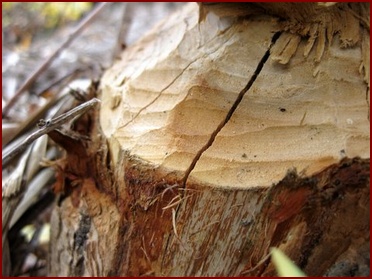COPYRIGHT 2010 DICK NEWELL
 |
 |
 |
ANALYZING BEAVER TRACK AND SIGN

 |
Beaver are not found in Orange County and are certainly uncommon elsewhere in coastal Southern California. When we learned that a colony might be found in nearby Riverside County we couldn’t resist the opportunity to investigate. Our trip took us to the confluence of the Temecula Creek and the Murrieta Creek near the headwaters of the Santa Margarita River which is just south of Old Town Temecula.
A quick look around the banks of the streambed confirmed our suspicions as the different water levels caused by the beaver’s dams were obvious as was the abundance of other sign.
Apparently during the early part of the 1940's the California Department of Fish and Game decided to introduce several pair of beavers into each of three rivers in San Diego County but how these animals got from there over to the headwaters of the Santa Margarita River is conjecture at best.
 |
Frequently these tracks are obliterated by the beaver’s flat tail or by the foliage it drags into the water. The animal’s trail is distinctive as the tail acts like a trowel and often flattens the surface of the mud bank, particularly in the slide area where the animal accesses the water.
 |
 |
They had created several dams nearby and used part of the natural rock formations to anchor their woodwork. In some cases they had built their lodge into the side of the bank as the water level was too low. What might appear to be a beaver dam in the following photo however is actually a man made structure used to control water flow but that didn't stop these rodents from using the pond.
 |
Ample evidence of browsing was everywhere. Beaver either strip the outer bark off the trees to enable them to feed on the cambium layer or they will chew the entire tree down to use in support of their construction efforts. Frequently they will start to drop a tree only to abandon the project and move on to something else for no apparent reason.
 |
We found Black Willow trees that measured more than four inches in diameter that had been felled and smaller plants such as the Arroyo Willow that had virtually every stem chewed off at a 45 degree angle.

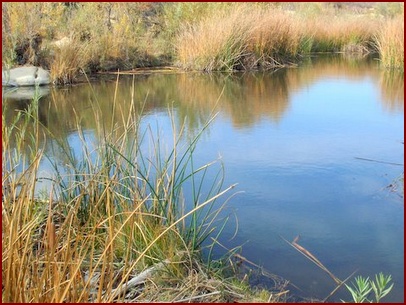
Like many other rodents the beaver normally shows four digits in its 2 ½" wide front track but a fifth digit (actually digit #1) may show in some substrates. The hind track of this plantigrade is much larger at about four inches or more in width. It has five digits and is webbed but often only three bird-track-like curved digits will show.
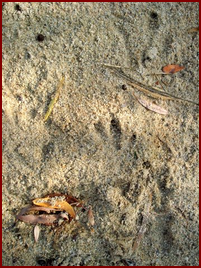
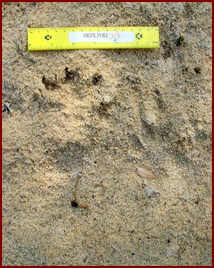
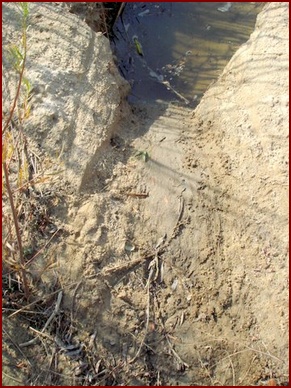
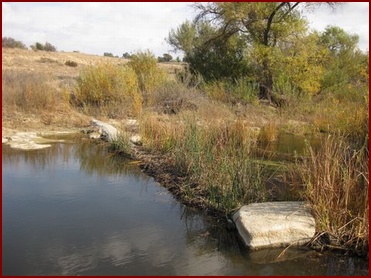
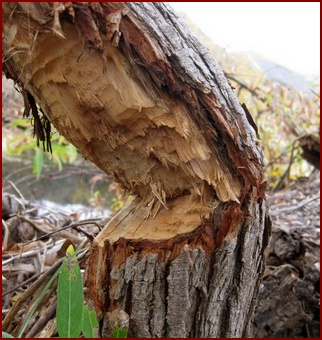
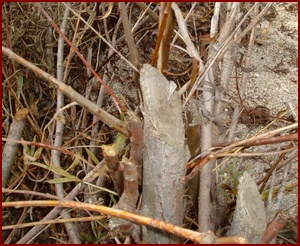
Horizontal tooth marks were obvious on the larger cuts while some of the small stuff was chewed off so clean they almost appeared to have been cut.
